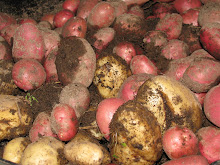“…maps lie in diverse ways” (p.216).
Mark Monmonier (2005) draws on Darrell Huff’s book “How to Lie with Statistics” to show that maps are an example of the distortions highlighted by Huff with statistics. Specifically in this article he looks at how a maps scale effects feature selection and geometry, the power of data classification and how symbolization can augment the information presented on the maps. Monmonier, recognizes the difference between statistics and maps. Maps at best are “massive reductions of the reality they represent” (p.215). He points out that if a map truly tried to epitomize everything, the map would be to perplexing to be properly understood. However, that in the process of mapmaking it is up to the cartographer to select relevant information and depict it in a way that is truthful. In addition, the user-friendly mapping software can generate increasingly less scrutinized maps. The scale needs to be matched with appropriate symbols, sounds simple, but as Monmonier points out, when you mix a scale bar with a more generalized small-scale map, it “invites grossly inaccurate estimates”. Another example, is cut-points, where a software default allocation of cut-points may make no sense to the actual data, although it may look convincing to the untrained eye. One example is statistical averages by state where varying cut-points can drastically change the message. In addition, the statistics can be manipulated greatly using the same data, but different re-organizations of the numbers can show drastic differences, making the map vulnerable to special interest groups. The third example that he discusses is bivariate correlation where pairs of chloropleth maps can falsely show bivariate correlation with only simple manipulation.
In conclusion, what Monmonier, is really trying to get at is that by doing something wrong in the depiction of the data, the mapmaker can overtly lead the user to misleading interpretations, and ultimately bad decisions. This is made simpler with software that relies less on knowing the data, and more on generating fancy maps. The software gives the mapmaker the tools to easily show seemingly powerful images with a few keystrokes, but that these images may lie. In the hopes of explaining himself for the title, Monmonier states that mostly it is not lies in the maps but “inadvertent fabrication” (222). Oh yes, I think we would all like to call it that.

Ha-ha!
ReplyDeleteNice synopses Pam. You write very nicely.